Themed collection JMC A Editor’s choice collection: Recent advances in batteries

Recent advances in inorganic 2D materials and their applications in lithium and sodium batteries
Inorganic 2D materials have found broad applications in lithium and sodium batteries.
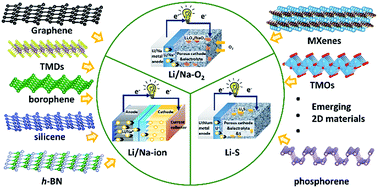
J. Mater. Chem. A, 2017,5, 3735-3758
https://doi.org/10.1039/C6TA09831B
A review of Ni-based layered oxides for rechargeable Li-ion batteries
This article reviews Ni-based layered oxide cathodes for Li-ion batteries, primarily from a materials design perspective.
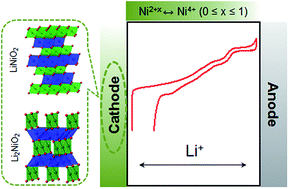
J. Mater. Chem. A, 2017,5, 874-901
https://doi.org/10.1039/C6TA07991A
Effective strategies for stabilizing sulfur for advanced lithium–sulfur batteries
This review focuses on recent developments in the last three years of various sulfur integration methods in lithium-sulfur batteries.
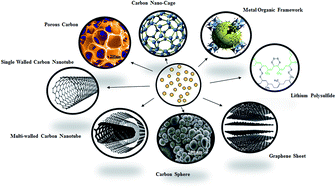
J. Mater. Chem. A, 2017,5, 448-469
https://doi.org/10.1039/C6TA07864H
Polymer electrolytes for lithium polymer batteries
In this review, state-of-the-art polymer electrolytes are discussed with respect to their electrochemical and physical properties for their application in lithium polymer batteries.
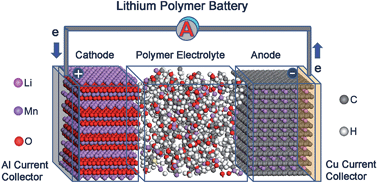
J. Mater. Chem. A, 2016,4, 10038-10069
https://doi.org/10.1039/C6TA02621D
The applications of carbon nanotubes and graphene in advanced rechargeable lithium batteries
This study summarizes the unique advantages of CNTs and graphene in battery applications, updates the most recent progress, and compares the prospects and challenges of CNTs and graphene for future full utilization in energy storage applications.
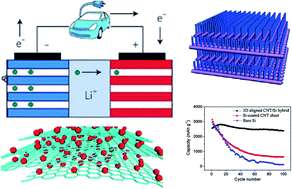
J. Mater. Chem. A, 2016,4, 8932-8951
https://doi.org/10.1039/C6TA01546H
Materials chemistry toward electrochemical energy storage
Materials chemistry focuses on all aspects of the production of electrode materials and on the properties or applications of materials related to energy storage, which plays an important role in designing high-performance electrode materials.

J. Mater. Chem. A, 2016,4, 7522-7537
https://doi.org/10.1039/C6TA01527A
Recent progress in rechargeable lithium batteries with organic materials as promising electrodes
Different organic electrode materials in lithium-ion batteries are divided into three types: positive electrode materials, negative electrode materials, and bi-functional electrode materials, and are further discussed.

J. Mater. Chem. A, 2016,4, 7091-7106
https://doi.org/10.1039/C6TA01069E
A novel K-ion battery: hexacyanoferrate(II)/graphite cell
The four volt K-ion battery is demonstrated as a possible alternative to 4 volt Li-ion battery.

J. Mater. Chem. A, 2017,5, 4325-4330
https://doi.org/10.1039/C7TA00220C
A CNT cocoon on sodium manganate nanotubes forming a core/branch cathode coupled with a helical carbon nanofibre anode for enhanced sodium ion batteries
Full cells based on a P2-type Na0.7MnO2.05 nanotube/CNT cathode and a helical carbon nanofiber anode are developed and show enhanced sodium ion storage capacity.
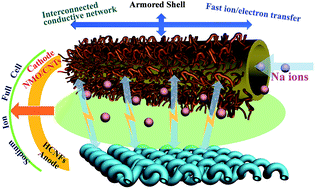
J. Mater. Chem. A, 2016,4, 11207-11213
https://doi.org/10.1039/C6TA05069G
Pyrite FeS2 as an efficient adsorbent of lithium polysulphide for improved lithium–sulphur batteries
Pyrite FeS2 effectively adsorbs polysulphide anions by forming active Li2Sn–FeS2 complexes, which significantly stabilise the capacity retention of Li–S batteries.

J. Mater. Chem. A, 2016,4, 4371-4374
https://doi.org/10.1039/C6TA01214K
Carambola-shaped VO2 nanostructures: a binder-free air electrode for an aqueous Na–air battery
Binder-free and bifunctional electrocatalysts have vital roles in the development of high-performance metal–air batteries.
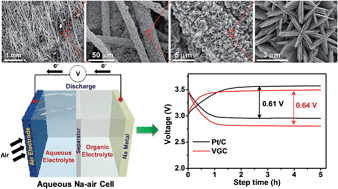
J. Mater. Chem. A, 2017,5, 2037-2044
https://doi.org/10.1039/C6TA09375B
Enhanced sulfide chemisorption using boron and oxygen dually doped multi-walled carbon nanotubes for advanced lithium–sulfur batteries
Boron and oxygen dual doping can improve the conductivity of MWNTs and enhance the chemisorption of sulfides in Li–S batteries.

J. Mater. Chem. A, 2017,5, 632-640
https://doi.org/10.1039/C6TA07620C
High-defect hydrophilic carbon cuboids anchored with Co/CoO nanoparticles as highly efficient and ultra-stable lithium-ion battery anodes
High-defect hydrophilic porous carbon cuboids with tightly anchored Co/CoO nanoparticles are rationally fabricated as ultra-stable anodes for lithium-ion batteries over 10 000 cycles.
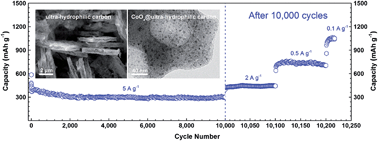
J. Mater. Chem. A, 2016,4, 10166-10173
https://doi.org/10.1039/C6TA03098J
Three-dimensional nickel nitride (Ni3N) nanosheets: free standing and flexible electrodes for lithium ion batteries and supercapacitors
This study demonstrates the use of 3D Ni3N/carbon cloth nanosheets as electrode materials for lithium ion batteries and supercapacitors.

J. Mater. Chem. A, 2016,4, 9844-9849
https://doi.org/10.1039/C6TA02492K
Graphene-based nitrogen-doped carbon sandwich nanosheets: a new capacitive process controlled anode material for high-performance sodium-ion batteries
A new capacitive process controlled anode material of graphene-based nitrogen-doped carbon sandwich nanosheets for sodium-ion batteries is reported.
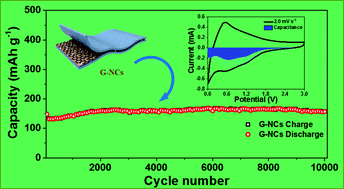
J. Mater. Chem. A, 2016,4, 8630-8635
https://doi.org/10.1039/C6TA02139E
Synthesis of one-dimensional NiFe2O4 nanostructures: tunable morphology and high-performance anode materials for Li ion batteries
Various controllable one-dimensional NiFe2O4 nanostructures were synthesized by electrospinning and hydraulic agitation as high-performance anode materials for lithium ion batteries.
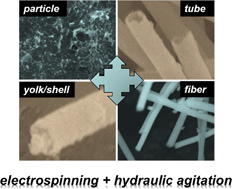
J. Mater. Chem. A, 2016,4, 8620-8629
https://doi.org/10.1039/C6TA02655A
A 2D porous porphyrin-based covalent organic framework for sulfur storage in lithium–sulfur batteries
A rationally designed porphyrin-based COF has been employed as a host material for sulfur storage in lithium–sulfur batteries.
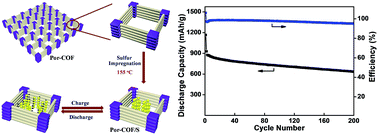
J. Mater. Chem. A, 2016,4, 7416-7421
https://doi.org/10.1039/C6TA00483K
Mo2C as a high capacity anode material: a first-principles study
Its good electrical conductivity, fast ion diffusion, good average open-circuit voltage and theoretical capacity suggest that the Mo2C monolayer can be utilized as a promising anode material.
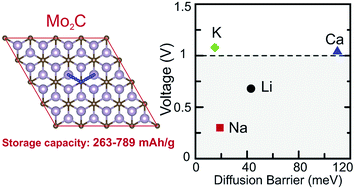
J. Mater. Chem. A, 2016,4, 6029-6035
https://doi.org/10.1039/C6TA01918H
A symmetric organic-based nonaqueous redox flow battery and its state of charge diagnostics by FTIR
A new nonaqueous symmetric redox flow battery was developed based on an organic ambipolar electroactive material. FTIR demonstrated great potential for online monitoring of the state of charge of this flow battery.
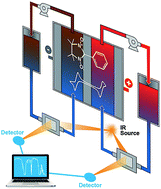
J. Mater. Chem. A, 2016,4, 5448-5456
https://doi.org/10.1039/C6TA01177B
Excellent energy–power characteristics from a hybrid sodium ion capacitor based on identical carbon nanosheets in both electrodes
Sodium ion capacitor device fabricated by using peanut skin derived carbon nanosheets that has excellent electrochemical performance and promise for both low cost and environmentally friendliness.
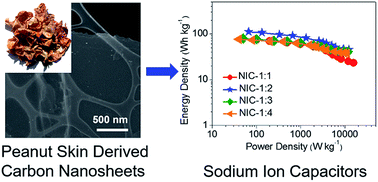
J. Mater. Chem. A, 2016,4, 5149-5158
https://doi.org/10.1039/C6TA01392A
About this collection
This second in a series of Journal of Materials Chemistry A Editor’s Choice collections focusses on batteries.
The journal’s Associate Editor Shizhang Qiao (The University of Adelaide, Australia) has gathered together the journal’s most outstanding recent papers in batteries.
In order to highlight developments in batteries, this online collection summarizes recent experimental papers and reviews published on the topic.